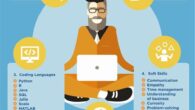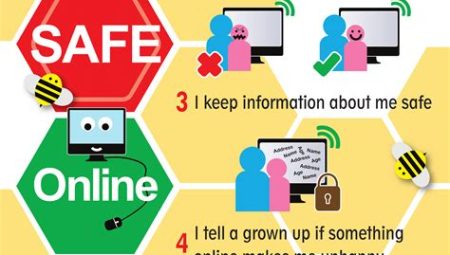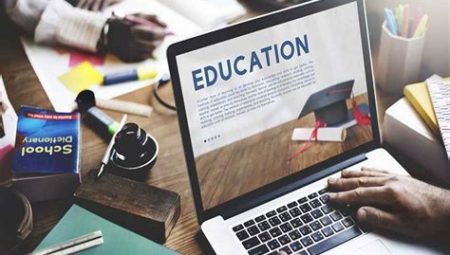In today’s fast-paced and technology-driven world, the field of education is experiencing a revolution like never before. The incredible potential of educational technologies is transforming the way students learn and teachers educate. From interactive learning tools to virtual reality and artificial intelligence, the possibilities for revolutionizing education are endless. In this blog post, we will explore the various ways in which educational technologies are changing the landscape of learning. We will delve into the ways in which these tools are engaging students, enhancing collaboration, and communication in the classroom, and even personalizing learning experiences. Additionally, we will discuss how edtech is breaking down barriers with online and distance learning, improving accessibility for learners with disabilities, and transforming assessment and feedback. Join us as we explore how these innovative tools are empowering both students and teachers to reach new heights in education.
Table of Contents
Engaging students with interactive learning tools
Interactive learning tools have transformed the way students engage with educational content in the modern classroom. These tools, such as educational apps and online platforms, provide students with a more hands-on and immersive learning experience, making the learning process more engaging and enjoyable.
By incorporating interactive whiteboards and digital simulations into the curriculum, teachers can capture the attention of their students and create a more dynamic and interactive learning environment, increasing student participation and knowledge retention.
Furthermore, interactive learning tools allow for personalized learning experiences by catering to different learning styles and paces, as students can progress through the material at their own speed and revisit concepts as needed. This level of customization enhances student engagement and fosters a more positive attitude towards learning.
Overall, the integration of interactive learning tools in the classroom is essential for engaging students and promoting a more interactive and immersive learning experience, ultimately leading to improved academic performance and a deeper understanding of the material.
Enhancing collaboration and communication in the classroom
Collaboration and communication are essential components of a successful classroom environment. When students are able to work together and effectively communicate their ideas, it can lead to deeper learning and a more engaging experience for everyone involved. In today’s digital age, there are countless tools and technologies available that can help educators enhance collaboration and communication in the classroom.
One way to enhance collaboration and communication in the classroom is through the use of online collaborative platforms. These platforms allow students to work together on projects, share ideas, and provide feedback to one another in real time. By utilizing these tools, educators can create a more interactive and engaging learning environment that encourages students to actively participate in the learning process.
Another way to enhance collaboration and communication in the classroom is by incorporating virtual communication tools such as video conferencing and messaging platforms. These tools can help students connect with one another outside of the traditional classroom setting, allowing for continued collaboration and communication even when students are not physically present in the same location.
Furthermore, the use of digital collaboration tools such as shared documents, online whiteboards, and collaborative editing software can also play a crucial role in enhancing collaboration and communication in the classroom. These tools allow students to work together on projects and assignments, providing a more dynamic and interactive learning experience.
Personalized learning through adaptive technologies
Personalized learning through adaptive technologies is a method of education that takes into account the individual needs and learning styles of each student. This approach uses technology to tailor the learning experience to the specific strengths and weaknesses of the learner, allowing for a more customised and effective learning process.
By utilizing adaptive technologies, educators can create personalized learning paths for students, providing them with the resources and support they need to succeed. Whether it’s through interactive online modules, digital assessments, or customized learning platforms, these technologies can adapt to each student’s pace, preferences, and learning objectives.
One of the key benefits of personalized learning through adaptive technologies is the ability to address the diverse needs of students with different backgrounds, abilities, and learning styles. This approach fosters a more inclusive and equitable learning environment, where students can thrive and reach their full potential.
Ultimately, personalized learning through adaptive technologies empowers students to take ownership of their learning journey, providing them with the tools and resources to succeed in their own unique way.
Revolutionizing education with virtual reality
Virtual reality (VR) has been revolutionizing the way education is delivered and experienced in recent years. This cutting-edge technology allows students to immerse themselves in realistic virtual environments, bringing the classroom to life with interactive and engaging learning experiences. With VR, students can explore historical sites, dissect complex biological structures, or even travel to outer space, all from the comfort of their classroom.
One of the key advantages of VR in education is its ability to cater to different learning styles and preferences. Visual and kinesthetic learners, in particular, can benefit greatly from the hands-on and interactive nature of VR experiences. This technology also provides a unique opportunity for students to engage with complex concepts in a way that traditional teaching methods simply cannot replicate.
Moreover, VR has the potential to bridge the gap between theoretical knowledge and practical application. Students can practice real-life skills in a safe and controlled environment, making the learning process more experiential and effective. This not only enhances their understanding of the subject matter but also fosters critical thinking, problem-solving, and creativity.
In conclusion, virtual reality has the power to revolutionize education by offering immersive, personalized, and interactive learning experiences. As VR continues to evolve and become more accessible, its potential to transform the way we teach and learn is truly unparalleled.
Harnessing the power of artificial intelligence in education
Artificial intelligence (AI) is revolutionizing the way education is delivered and received. AI has the potential to personalize the learning experience for each student, making it more effective and engaging. By analyzing student data, AI can identify areas where a student may need extra help, and provide targeted resources to support their learning. This level of personalized learning has the potential to transform the traditional classroom model and ensure that no student is left behind.
Furthermore, AI can enhance the role of educators by providing them with valuable insights into student performance and learning patterns. This allows teachers to adapt their teaching methods to better meet the needs of individual students, and ultimately improve learning outcomes. Additionally, AI can automate administrative tasks, allowing teachers to focus more on student engagement and support.
Another way in which AI is transforming education is through the development of intelligent tutoring systems. These systems use AI to provide personalized tutoring and feedback to students, offering them the support they need to master challenging concepts. This personalized approach to learning has the potential to greatly improve student retention and academic success.
Overall, the integration of AI in education has the potential to significantly improve the learning experience for students, empower educators, and ultimately revolutionize the way we approach teaching and learning.
Gamification: Making learning fun and engaging
Gamification in education is a concept that has been gaining popularity in recent years. It involves using game-like elements such as points, badges, and leaderboards to make learning more engaging and enjoyable for students. By incorporating these elements into the learning process, educators can motivate students to stay focused and actively participate in their own education.
One of the key benefits of gamification is that it can make learning more fun. When students are actively engaged in a game-like learning environment, they are more likely to enjoy the process of acquiring new knowledge and skills. This can lead to increased motivation and a greater sense of achievement, ultimately resulting in improved learning outcomes.
Furthermore, gamification can also help to foster a sense of competition among students, encouraging them to strive for excellence and continuously improve their performance. By creating a friendly and competitive atmosphere, educators can stimulate students’ intrinsic motivation and drive to succeed, leading to a more positive and productive learning experience.
In conclusion, gamification has the potential to revolutionize education by making learning more enjoyable and engaging for students. By integrating game-like elements into the learning process, educators can create a stimulating and interactive environment that motivates students to actively participate in their own education and strive for excellence.
Empowering teachers with smart educational tools
Teachers are the backbone of our education system, and their ability to effectively engage and educate students is crucial to the success of our future generations. With the advancement of technology, there are now countless smart educational tools available that can empower teachers to enhance their teaching methods and make learning more exciting and interactive for their students.
One of the key smart educational tools that has revolutionized the way teachers impart knowledge is interactive whiteboards. These digital boards allow teachers to present information in a dynamic and visually engaging manner, enabling them to easily incorporate multimedia elements into their lessons. This not only captures the attention of students but also helps to reinforce learning by providing a more immersive and memorable educational experience.
Furthermore, smart educational tools such as learning management systems (LMS) have enabled teachers to personalize the learning experience for each student. These platforms allow educators to create customized learning paths and provide individualized feedback, catering to the diverse needs and learning styles of their students. By leveraging the capabilities of LMS, teachers can adapt their teaching strategies to better meet the unique requirements of their students, ultimately fostering a more inclusive and effective learning environment.
In addition to aiding in content delivery and personalization, smart educational tools also play a significant role in simplifying administrative tasks for teachers. From digital gradebooks to automated assessment tools, these technologies help educators streamline their workload, allowing them to dedicate more time and energy to engaging with their students and refining their teaching techniques. This empowerment enables teachers to focus on the quality of education they provide, rather than being bogged down by tedious administrative responsibilities.
Breaking down barriers with online and distance learning
Online and distance learning have become increasingly popular in recent years as a way to overcome barriers to education. These barriers can include geographical distance, physical disabilities, or the need for flexibility in scheduling. By providing access to courses and educational materials through the internet, online and distance learning programs are breaking down these barriers and making education more accessible to a wider range of students.
One of the key advantages of online and distance learning is the ability to reach students who may not have easy access to traditional educational opportunities. Whether they live in remote areas or have physical disabilities that limit their ability to attend classes in person, online learning allows them to access the same quality education as their peers. This is especially important for students who may have been previously underserved by traditional education systems.
Furthermore, online and distance learning can also provide flexibility for students who need to work while pursuing their education. This can be particularly valuable for adult learners, parents, or individuals with other personal or professional responsibilities. By allowing students to access courses and materials at their own pace and on their own schedule, online learning can accommodate a wide range of needs and circumstances.
In addition, online and distance learning programs can also facilitate collaboration and communication among students and instructors. With the use of various digital tools such as video conferencing, discussion forums, and virtual learning environments, distance learning can create a sense of community and engagement that transcends physical barriers. This can enhance the overall educational experience and provide students with opportunities for meaningful interaction and support, despite the absence of face-to-face contact.
Improved accessibility for learners with disabilities
Ensuring improved accessibility for learners with disabilities is crucial in creating an inclusive and equitable learning environment. By utilizing edtech tools and resources, educators can effectively cater to the diverse needs of students with disabilities, enabling them to access and participate in learning activities on an equal footing with their peers.
One of the key ways in which edtech enhances accessibility is through the use of assistive technologies. These can include screen readers, alternative keyboards, and speech recognition software, among others, which can greatly benefit learners with visual, auditory, or motor impairments. By integrating these technologies into the learning process, educators can provide students with the necessary support to fully engage with the curriculum and achieve their learning goals.
Additionally, edtech can offer customizable learning experiences for students with disabilities, allowing for personalized accommodations and modifications. For example, digital textbooks and materials can be adjusted to meet individual needs, such as font size, color contrast, or audio narration, making the content more accessible and comprehensible for learners with various disabilities.
Furthermore, the use of online and distance learning platforms can significantly improve access to education for learners with disabilities, by removing physical barriers and providing flexibility in terms of schedule and pace. This can enable students who may have difficulty attending traditional classes due to mobility or health issues to still actively participate in their education and pursue their academic aspirations.
Transforming assessment and feedback with edtech
Assessment and feedback are crucial components of the learning process, allowing educators to gauge students’ understanding and provide them with valuable insights for improvement. With the advancement of educational technology (edtech), the traditional methods of assessment and feedback are being revolutionized, offering more efficient and effective ways to evaluate and support student learning.
One of the key ways in which edtech is transforming assessment is through the use of digital tools for administering and grading assignments. Online platforms and software make it easier for educators to create and distribute quizzes, tests, and assignments, as well as provide instant feedback to students. This not only saves time but also allows for more personalized and timely feedback, enhancing the learning experience for students.
Furthermore, edtech enables educators to gather and analyze data on students’ performance more comprehensively. By using learning management systems and analytics tools, teachers can gain valuable insights into students’ progress, identify areas of improvement, and tailor their feedback to address specific needs. This data-driven approach to assessment helps in providing more targeted and impactful feedback, ultimately leading to better learning outcomes.
Moreover, the use of edtech in assessment and feedback promotes greater inclusivity and accessibility for learners with disabilities. Digital tools can offer alternative formats for assessments, such as audio, video, or interactive materials, accommodating diverse learning needs and ensuring that all students have the opportunity to demonstrate their understanding and receive appropriate feedback.





